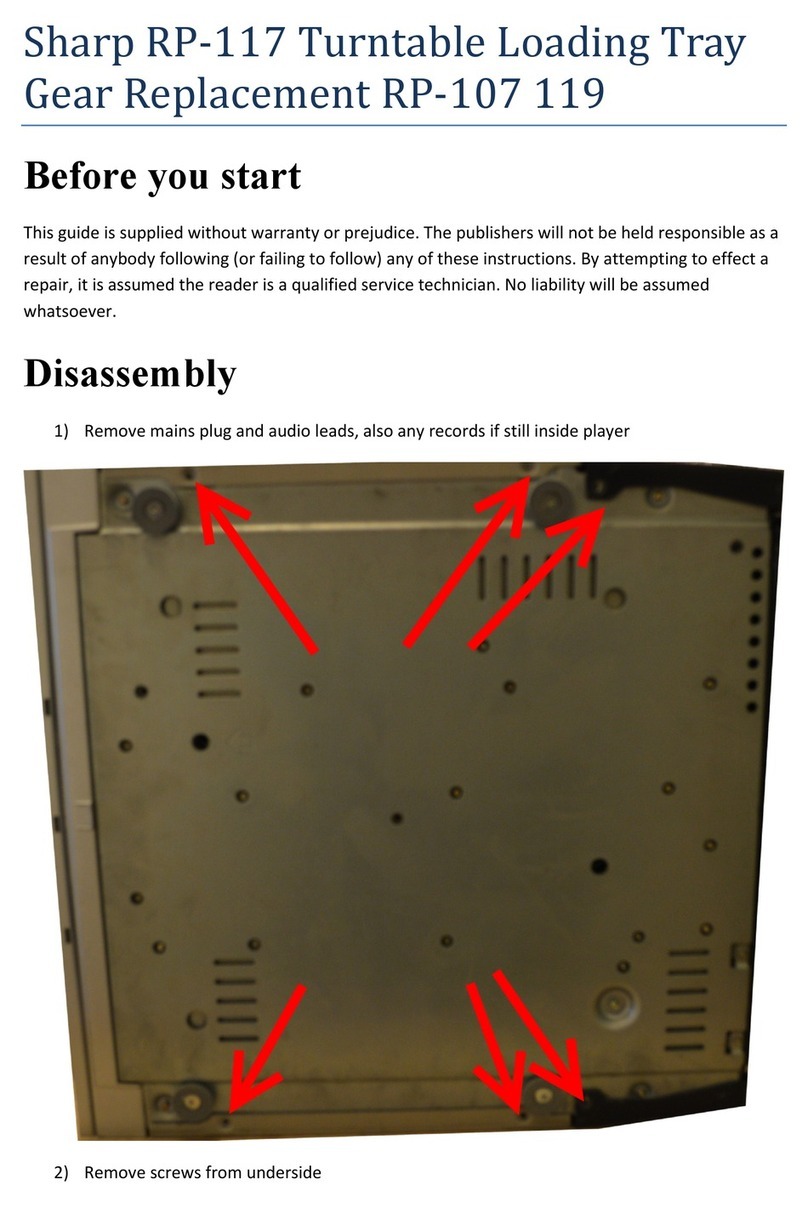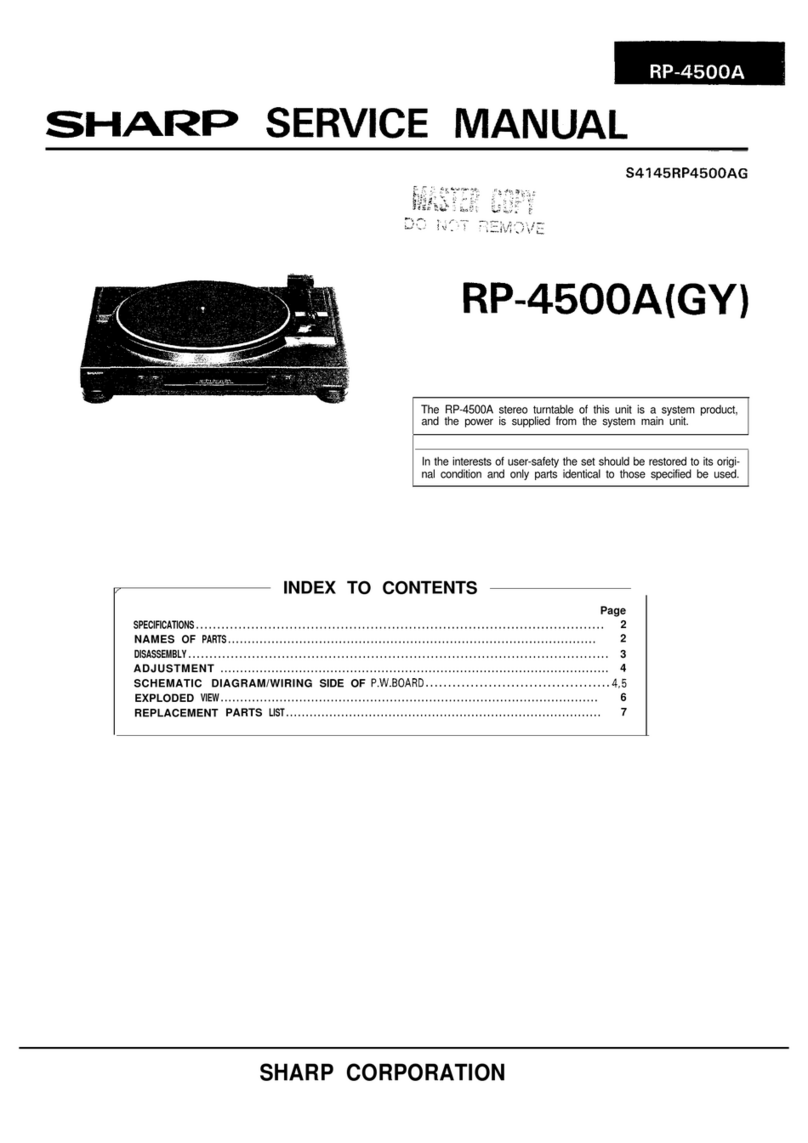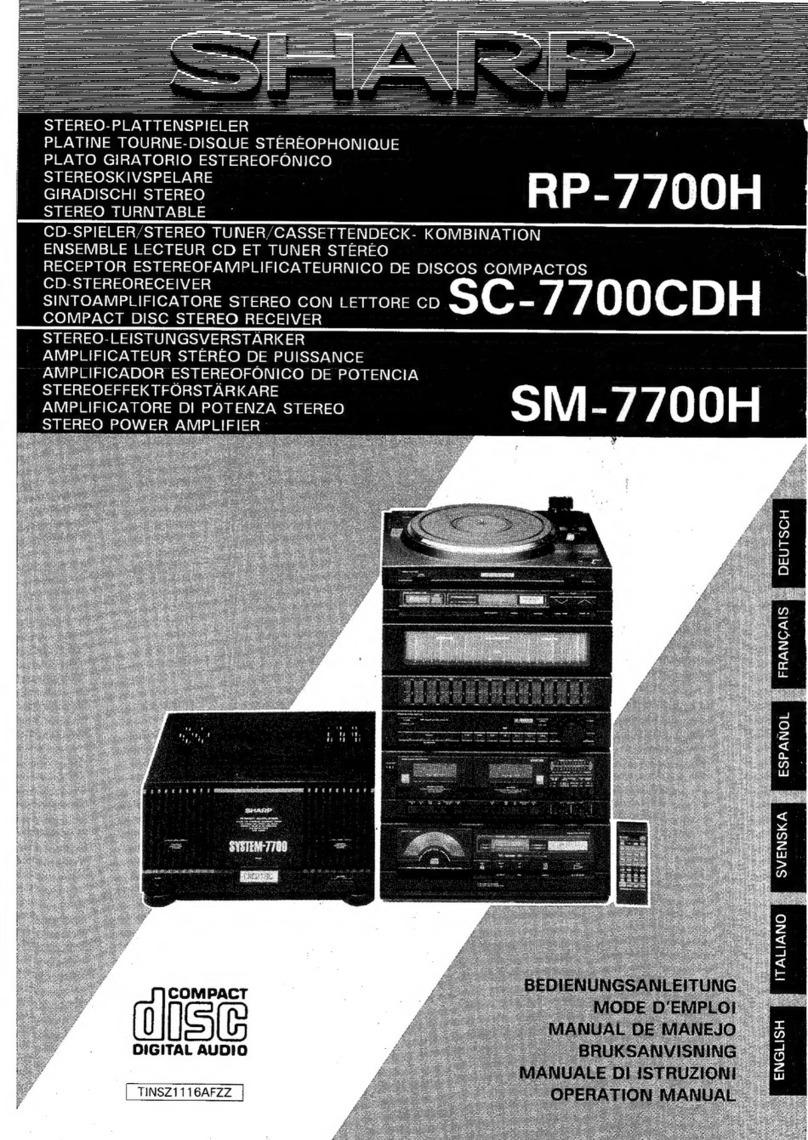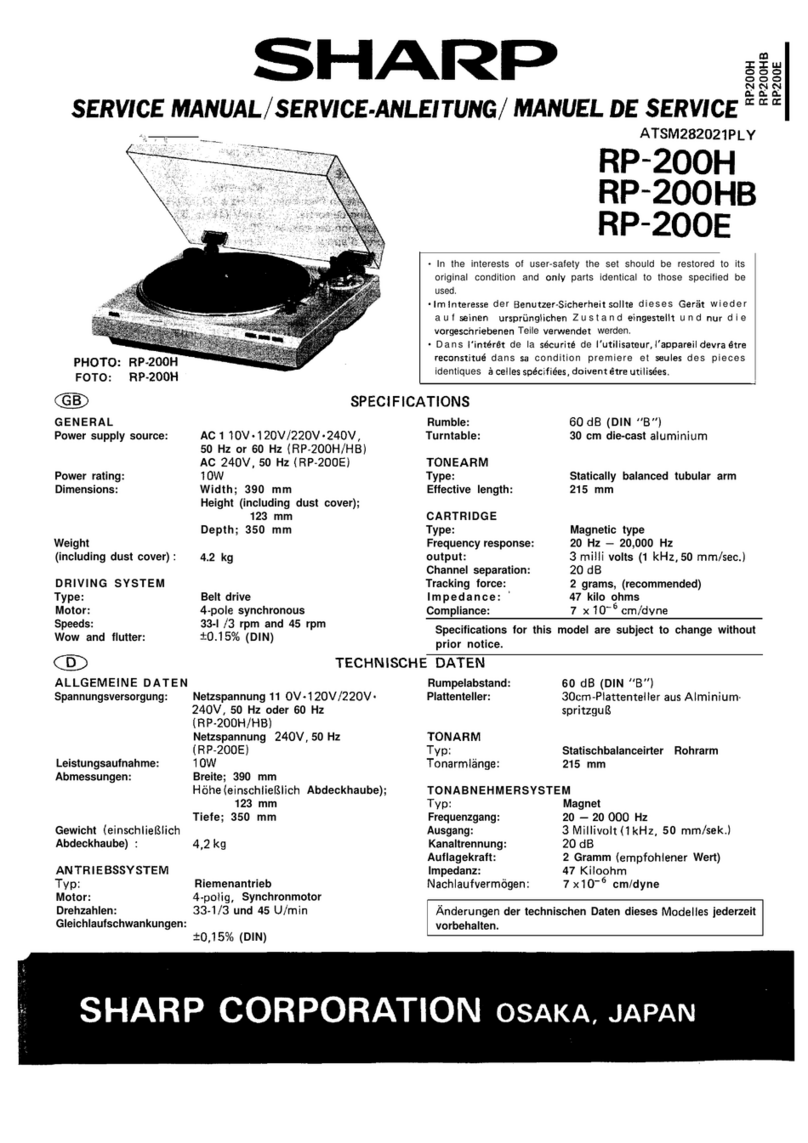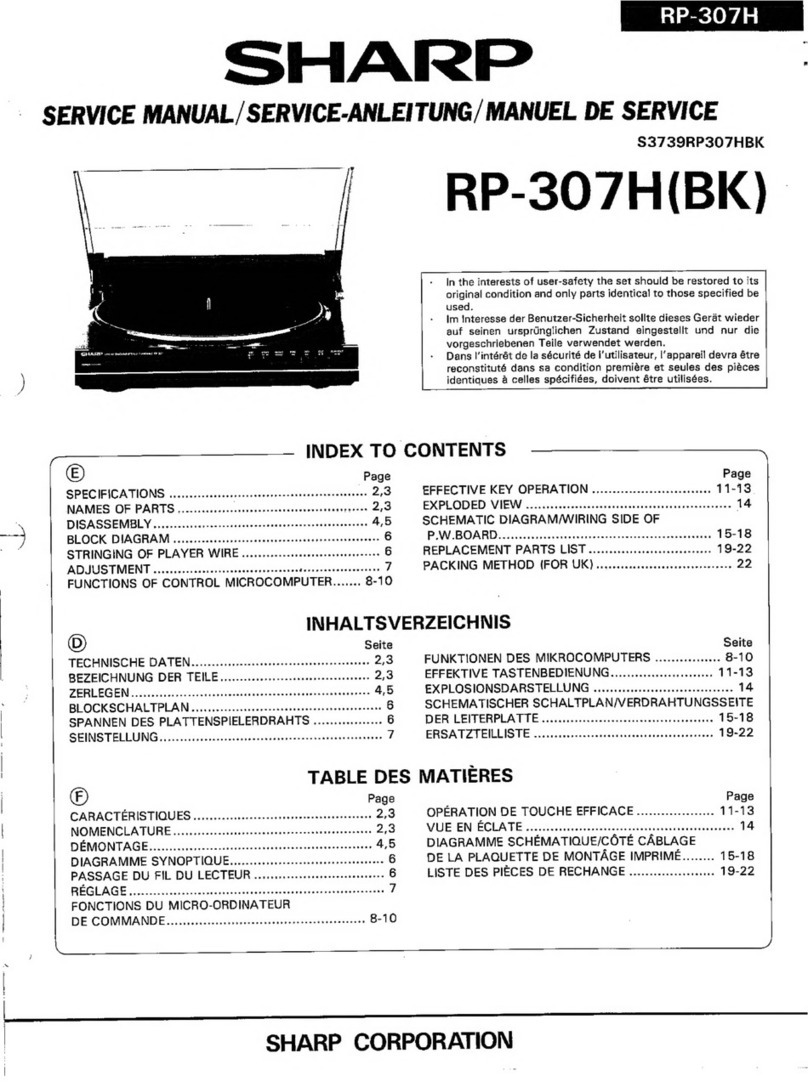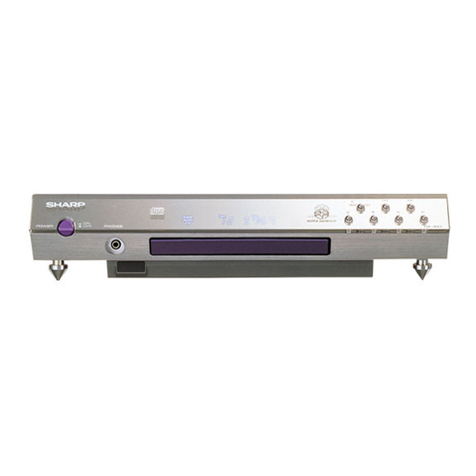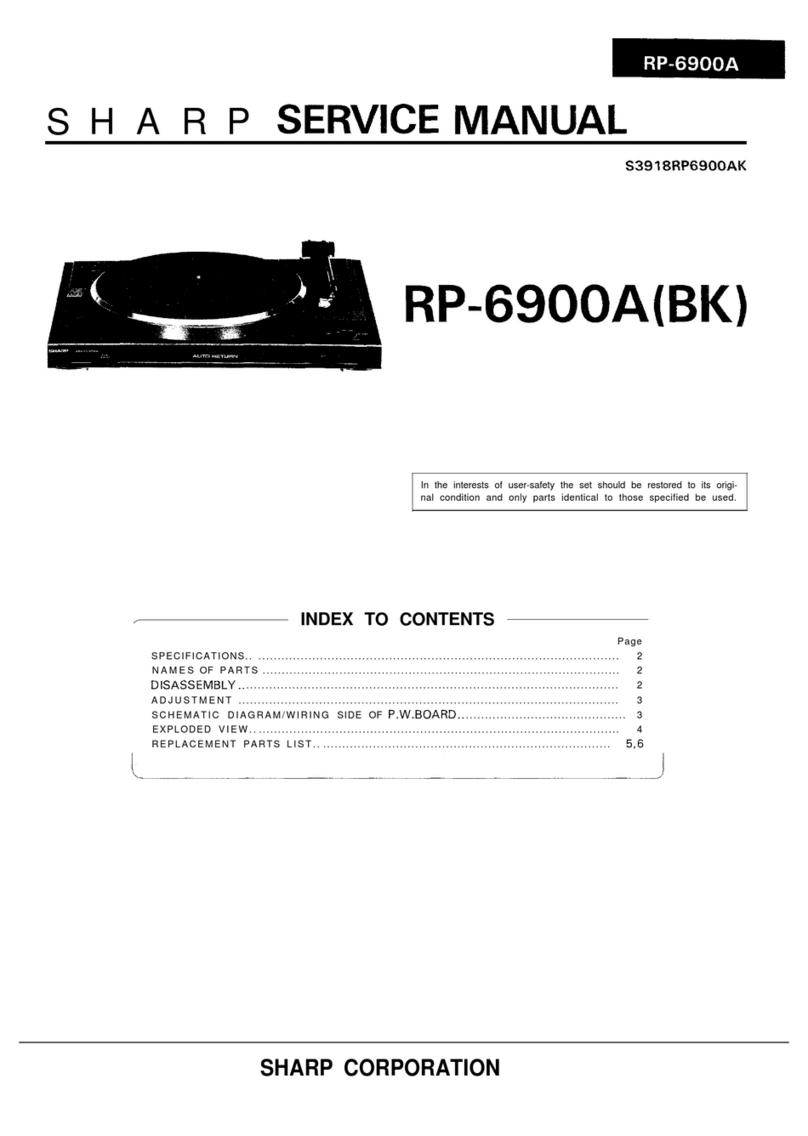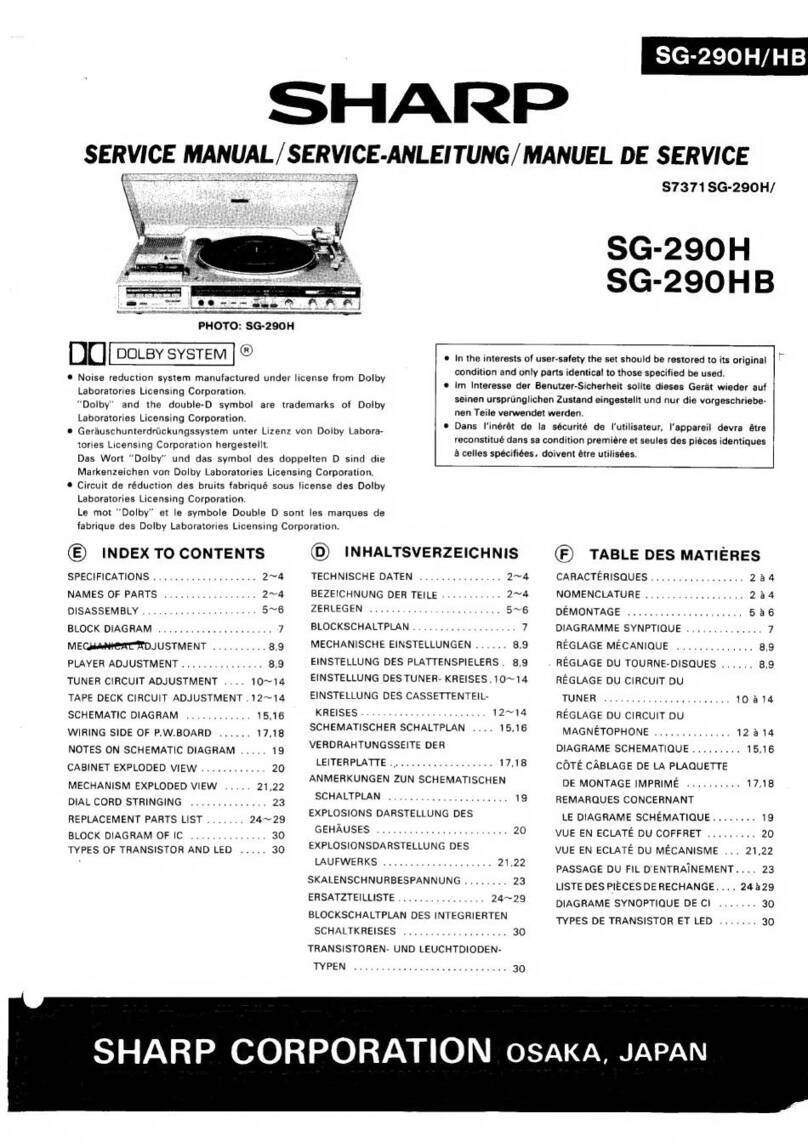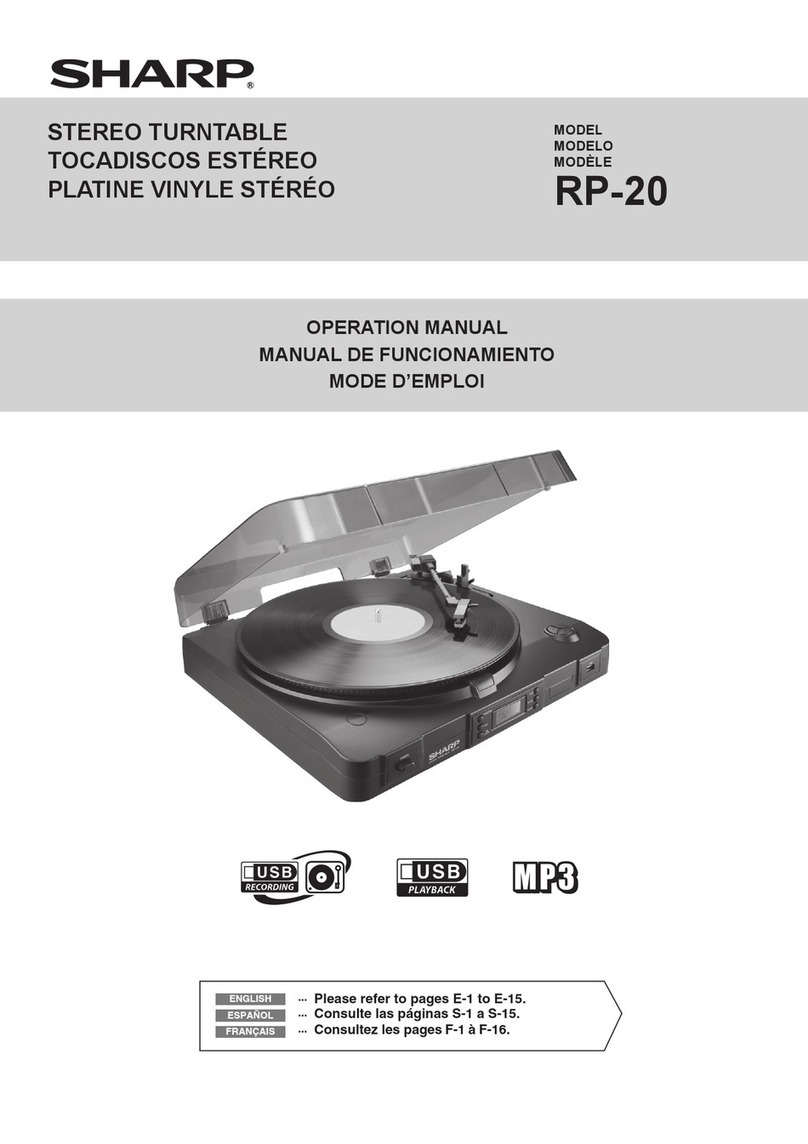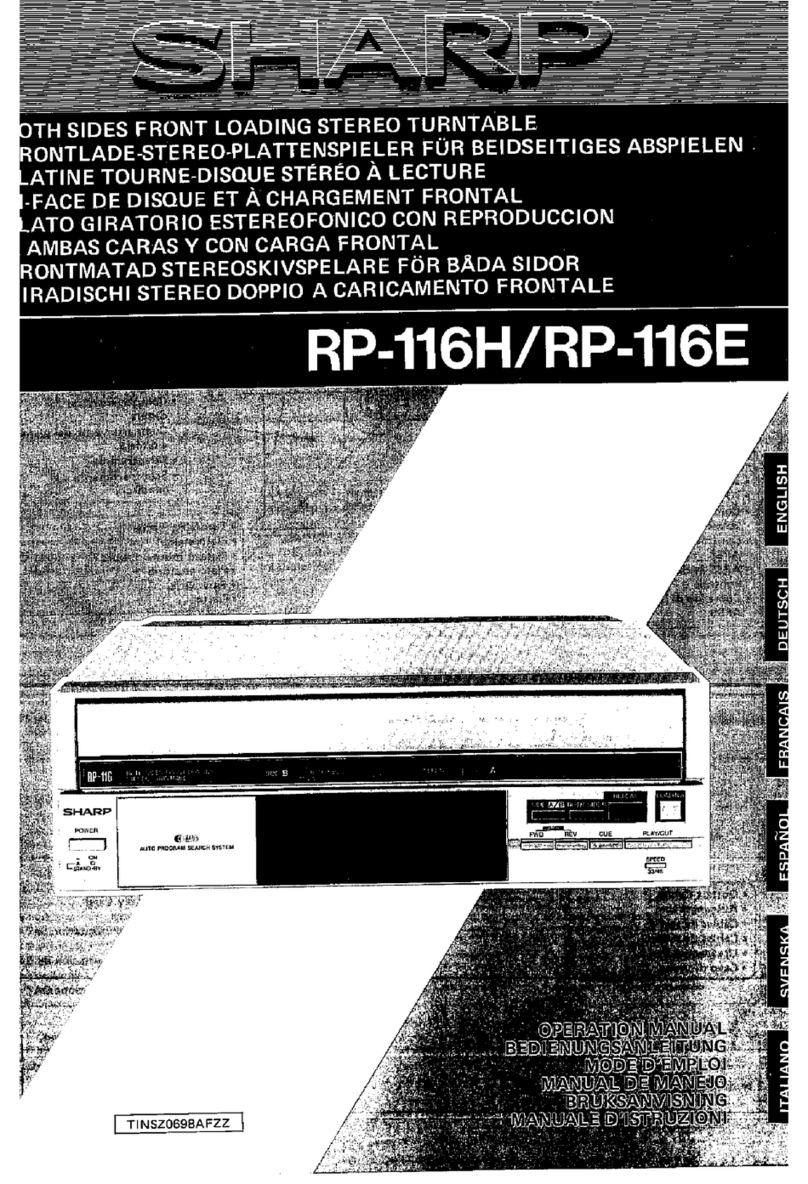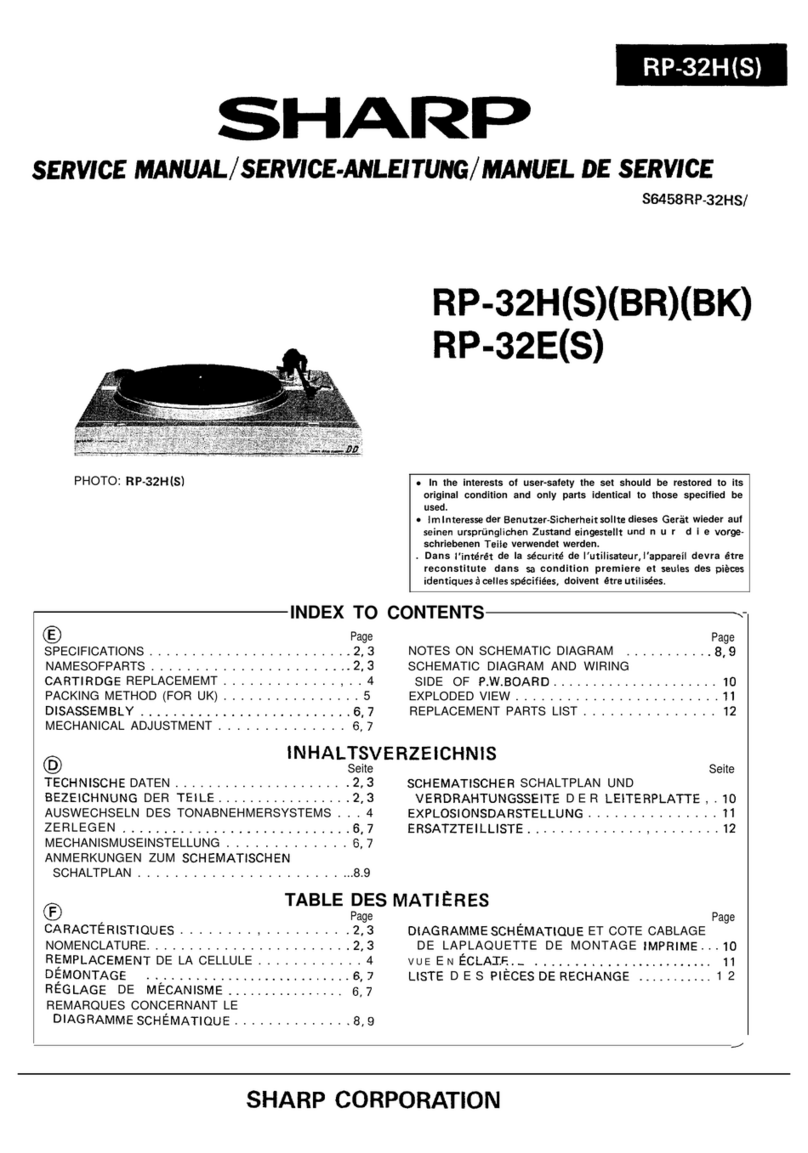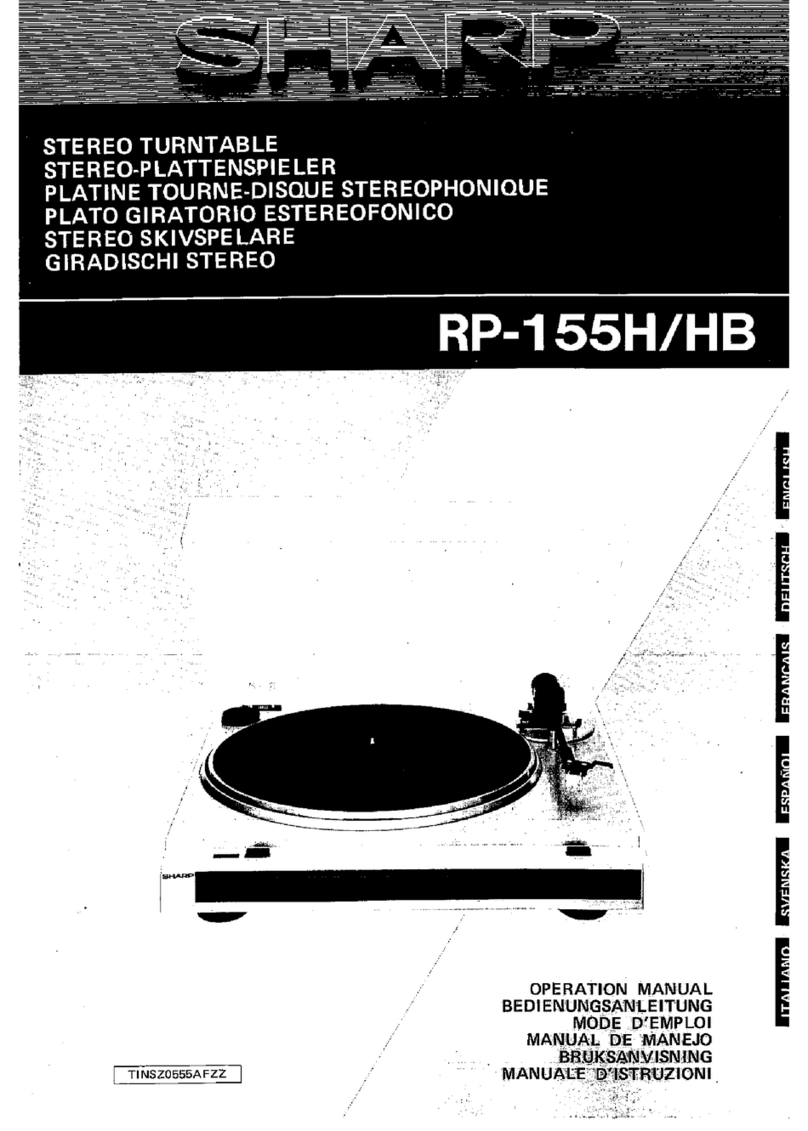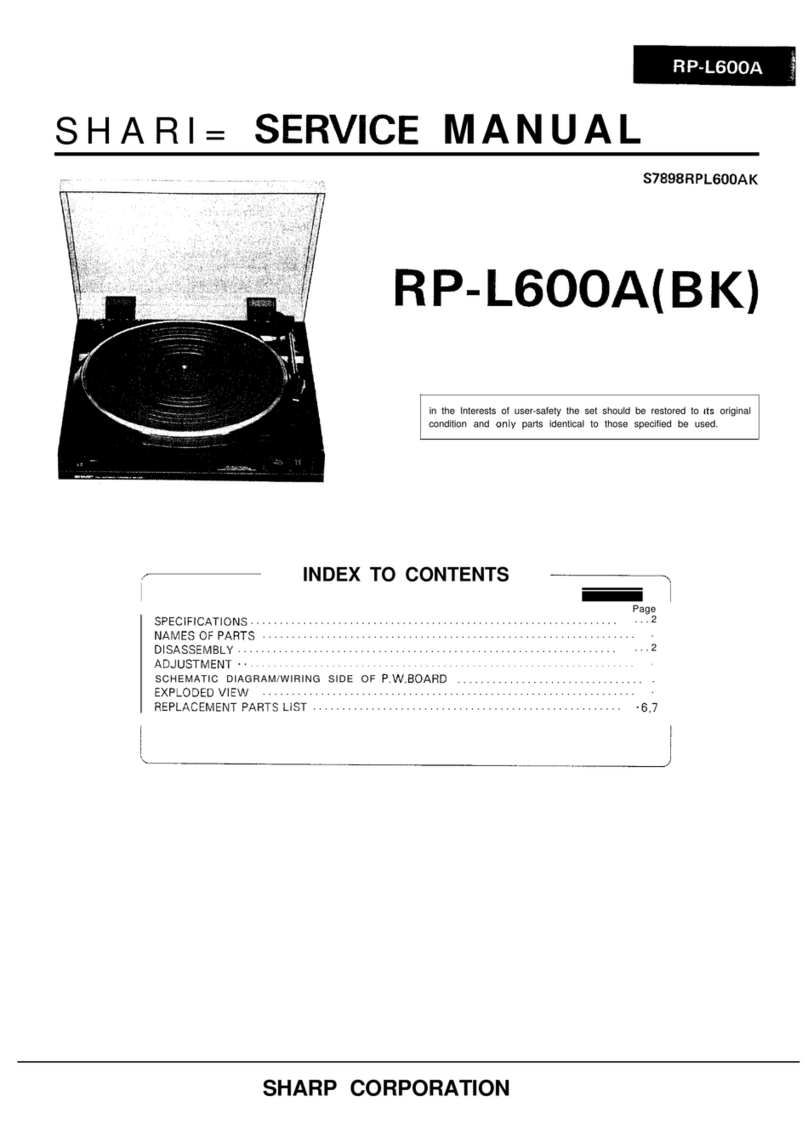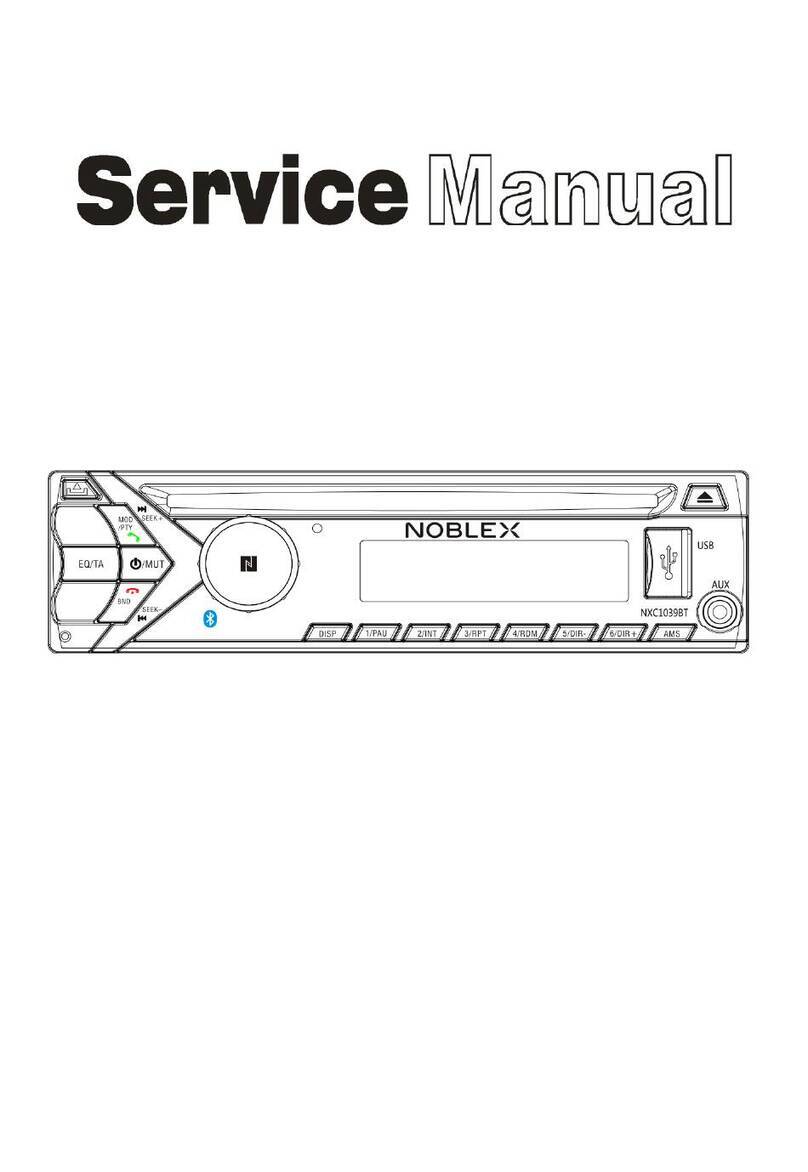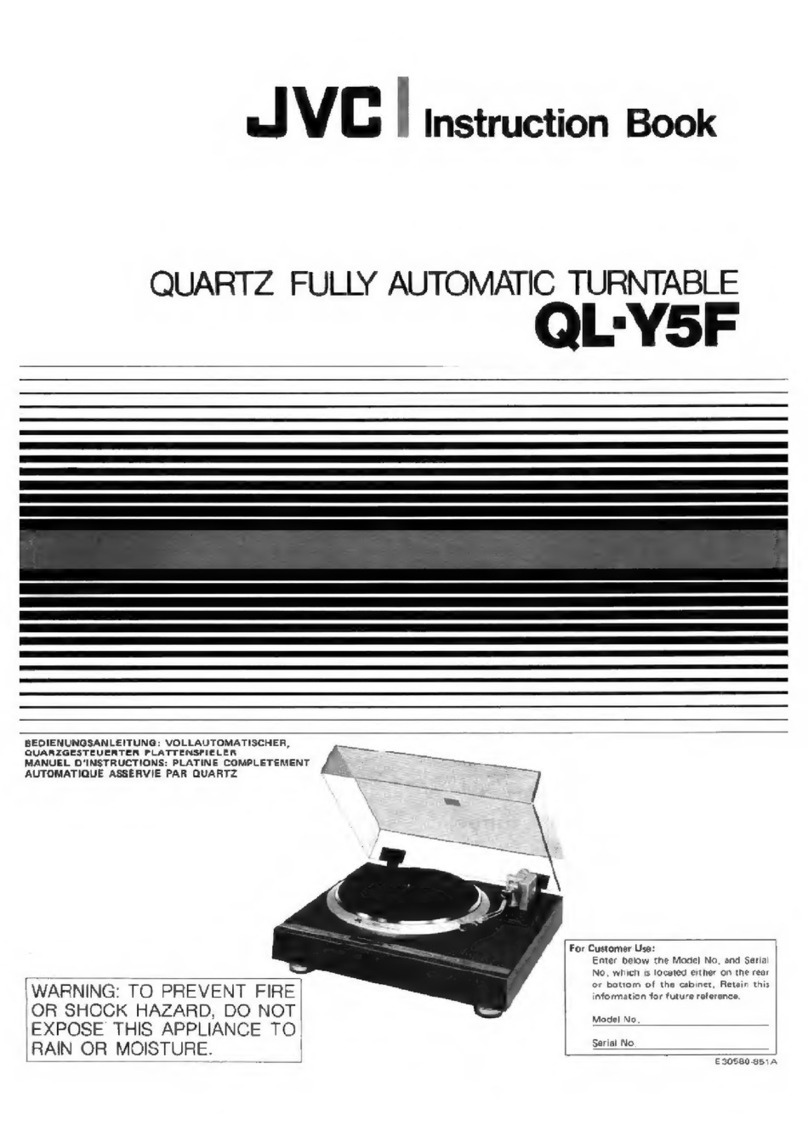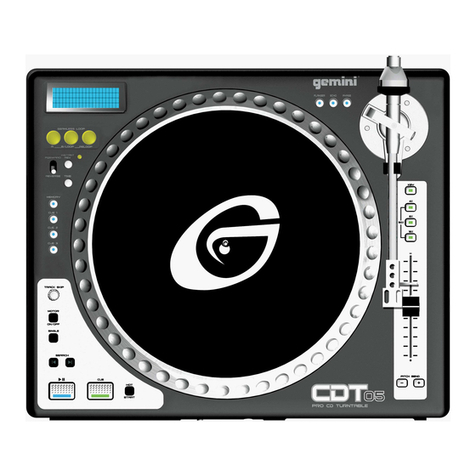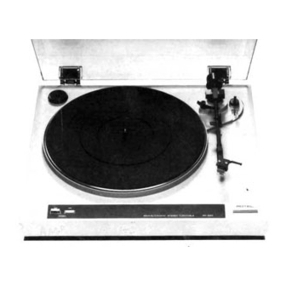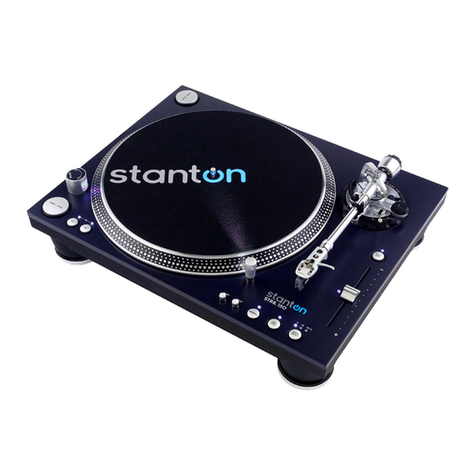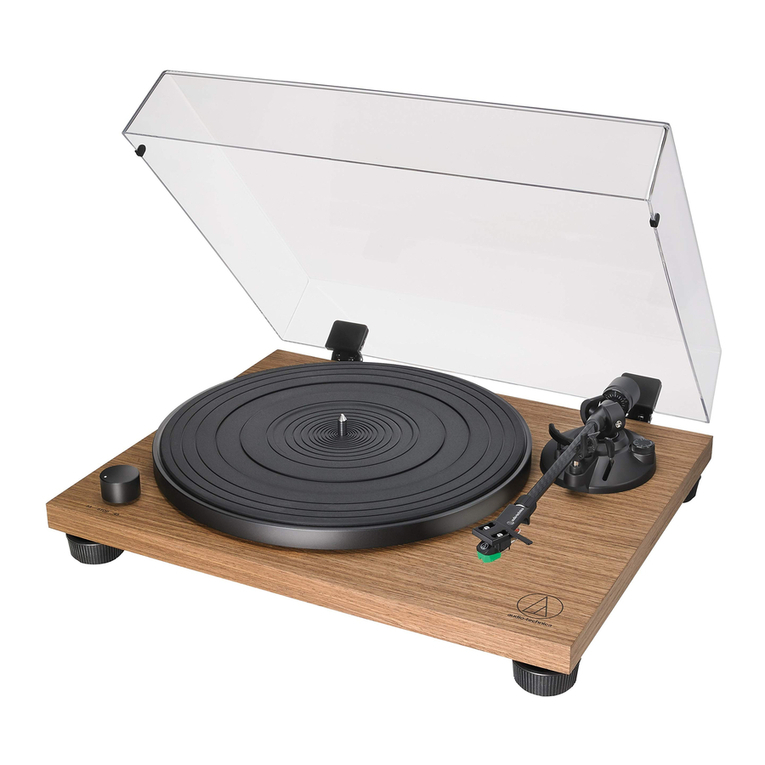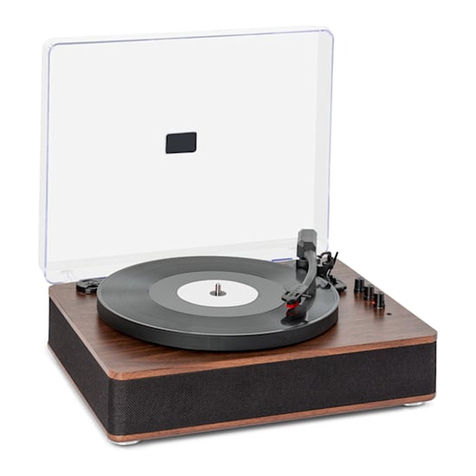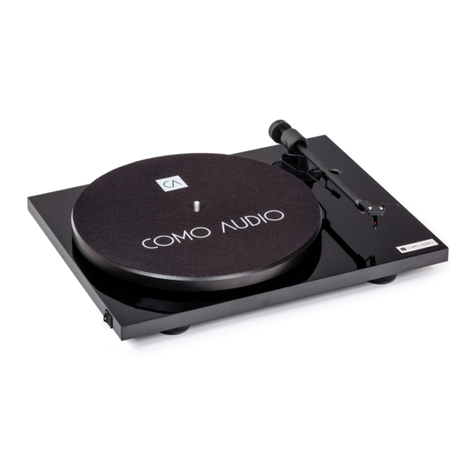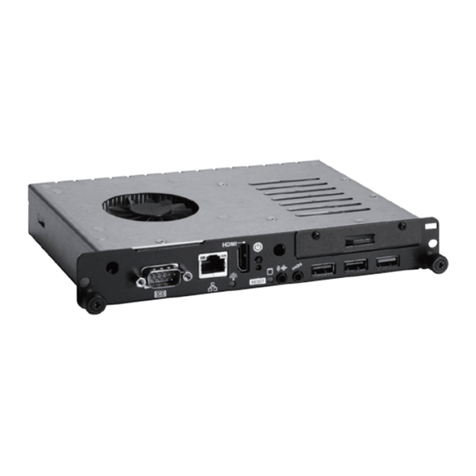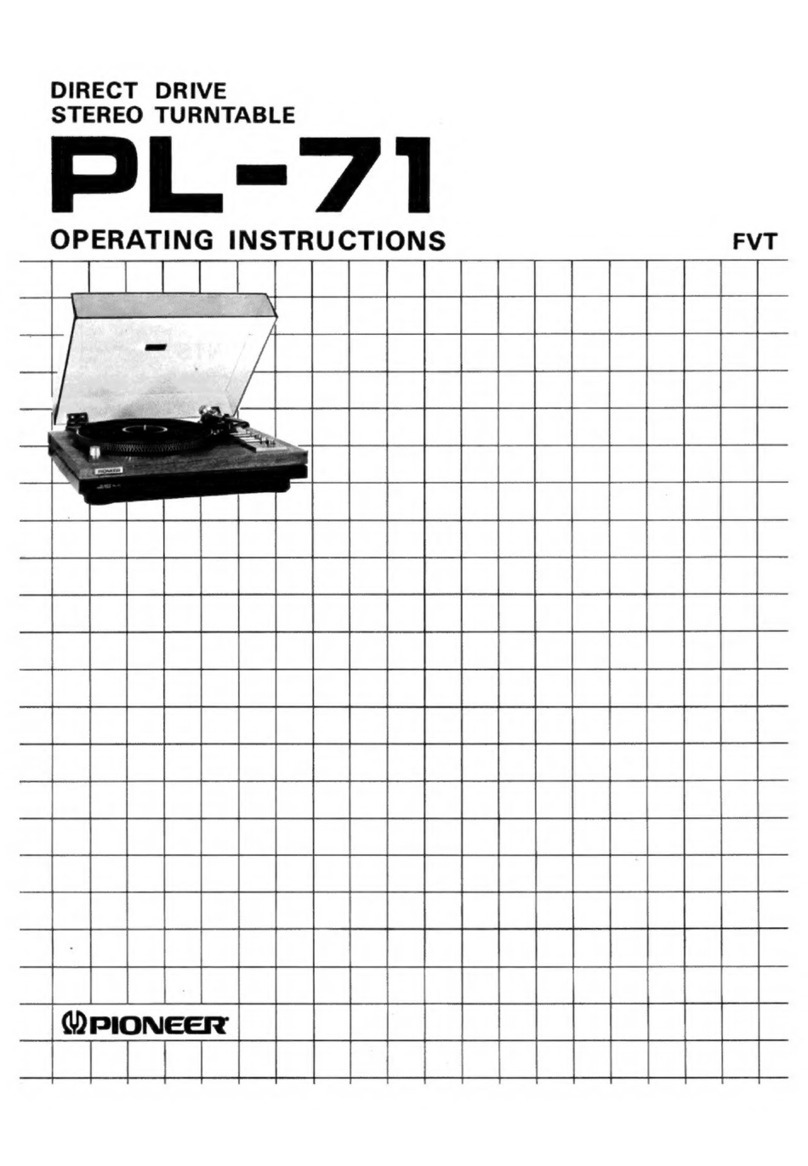
SHARP
|
RP-205H(S).
SERVICE
MANUAL
/
SERVICE-ANLEI
TUNG
/
MANUEL
DE
SERVICE
$75C5RP-205HS
RP-205H(S)(BK)
RP-205E(BiK)
BQTH
SIDES
PLAY
cC_]
e®ln
the
interests
of
user-safety
the
set
should
be
restored
to
its
PHOTO:
RP-205H(S}
original
condition
and
only
parts
identical
to
those
specified
be
used,
elm
|nteresse
der
Benutzer-Sicherheit
soilte
dieses
Gerat
wieder
auf
seinen
urspriinglichen
Zustand
eingestelit
und
nur
die
vorge-
schriebenen
Teile
verwendet
werden.
®
Dans
l‘intérét
de
la
sécurité
de
l’utilisateur,
l'appareil
devra
étre
reconstitute
dans
sa
condition
premiére
et
seules
des
piéces
identiques
a4
celles
spécifiées,
doivent
étre
utilisées.
INDEX
TO
CONTENTS
()
Page
Page
SPECIFICATIONS
(2:4
aires
ean
a
ae
ora
eee
PES
SCHEMATIC
DIAGRAM..................
13,
14
NAMES
OF
PARTS.........0ccc0ceeevevas
2,3
WIRING
SIDE
OF
P.W.BOARD
............
15,
16
DISASSEMBLY:
hi
Sates
oe
3
Cte
oa
ee ee
4,5
NOTES
ON
SCHEMATIC
DIAGRAM............
17
STRINGING
OF
PLAYER
WIRE
.............
6
EQUIVALENT
CIRCUIT
(BLOCK
DIAGRAM)
BLOCK
DIAGRAM)
0
2
act
<i0
eee
Sark.
Cae
hs
SS
7
OE
Ga
at
aco
ke
ena
te
ered
1s
ati
aaa
eater
ee
18
MECHANICAL
ADJUSTMENT
.............4..
8,9
TYPES
OF
TRANSISTOR
AND
LED..........
19
CIRCUIT,
ADJUSTMENT
%s.
¢
4.4200
63s
acewe-e
ow
4
8,9
EXPLODED.
WI
EW
ico
ard
&
cea
waked
deed
aad
20,
21
INPUT/OUTPUT
PINS
OF
MICROCOMPUTER
REPLACEMENT
PARTS
LIST
.............
22—26
CIGTO
Ti
tatiows
<i
aie
t
Sate
see
Si
we
soca
Ae
10-12
PACKING
METHOD
(RP-205E
ONLY)
.........
26
INHALTSVERZEICHNIS
(0)
4
Seite
Seite
TECHNISCHE
DATEN..........
00000
e
ee
eee
2,3
SCHEMATISCHER
SCHALTPLAN,..........
13,
14
BEZEICHNUNG
DER
TEILE.............05-
2;3
VERDRAHTUNGSSEITE
DER
LEITERPLATTE.
15,
16
ZERLEGEN
aso
eae
ween.
©
XK
Gin
REM
OES
4,5
ANMERKUNGEN
ZUM
SCHEMATISCHEN
SPANNEN
DES
PLATTENSPIELERDRAHTS.....
6
SOHAL
TPA
5
60a
awe
Were
cares
Ce
Paw
es
17
BLOCKSCHALTPLAN.
.é
4-6.
¢0.54:02
8-0-0
e
ate
o
7
ERSATZSCHALTKREIS
(BLOCKSCHALTPLAN)
MECHANISMUSEINSTELLUNG..............,
8,9
DES
INTEGRIERTEN
SCHALTKREISES......
18
SCHALTUNGSEINSTELLUNG................
8,9
TRANSISTOREN-UND
LEUCHTDIODENTYPEN....19
EINGANGS-/AUSGANGSSTIFTE
DES
EXPLOSIONSDARSTELLUNG..............
20,
21
MIKROCOMPUTERS
(IC101)............
10-12
BREA
2
EE
LIST
Ewe
isd
68.
Se
ace
be
yet
oe
he
22--26
TABLE
DES
MATIERS
Page
;
Page
GARACTERISTIQUES
si.cwwae
Gonder
wage
«
2,3
COTE
CABLEAGE
DE
LA
PLAQUETTE
DE
NOMENCLATURE
yee
wes
Wee
a
4
cece
o-oo
a
le
ies
2,3
MONTAGE
iMPRIME..................
15,
16
DEMONTAGE
seit
ora
das
aa
anal
ewer
aaaraes
4,5
REMARQUES
CONCERNANT
LE
DIAGRAMME
PASSAGE
DU
FiL
DU
LECTEUR............
6
SCH
EMAVTOUE
tu.
45
sae
34
ca
dace
Wa
arene
eae
ate
17
DIAGRAMME
SYNOPTIQUE
................
7
CIRCUITS
EQUIVALENTS
(DIAGRAMME
REGLAGE
DE
MECANISME
................
8,9
SYNG@PMOUE)
DEC
es
6
eatin
ok
RY
Ras
oes
18
REGLAGE
DU
CIRCUIT..................0.
8,9
TYPES
DE
TRANSISTOR
ET
LED............
19
BROCHES
D‘'ENTREE/SORTIE
DU
VUE
EN
ECLATE
aN
ariec
(atuaerhh
ante,
ty
at
ee
tic
ea
el
Saecdeoat
20,
21
MICRO-ORDINATEUR
(IC101)...........
10—12
LISTE
DES
PIECES
DE
RECHANGE........
22-26
DIAGRAMME
SCHEMATIQUE.............
13,
14
SHARP
CORPORATION
